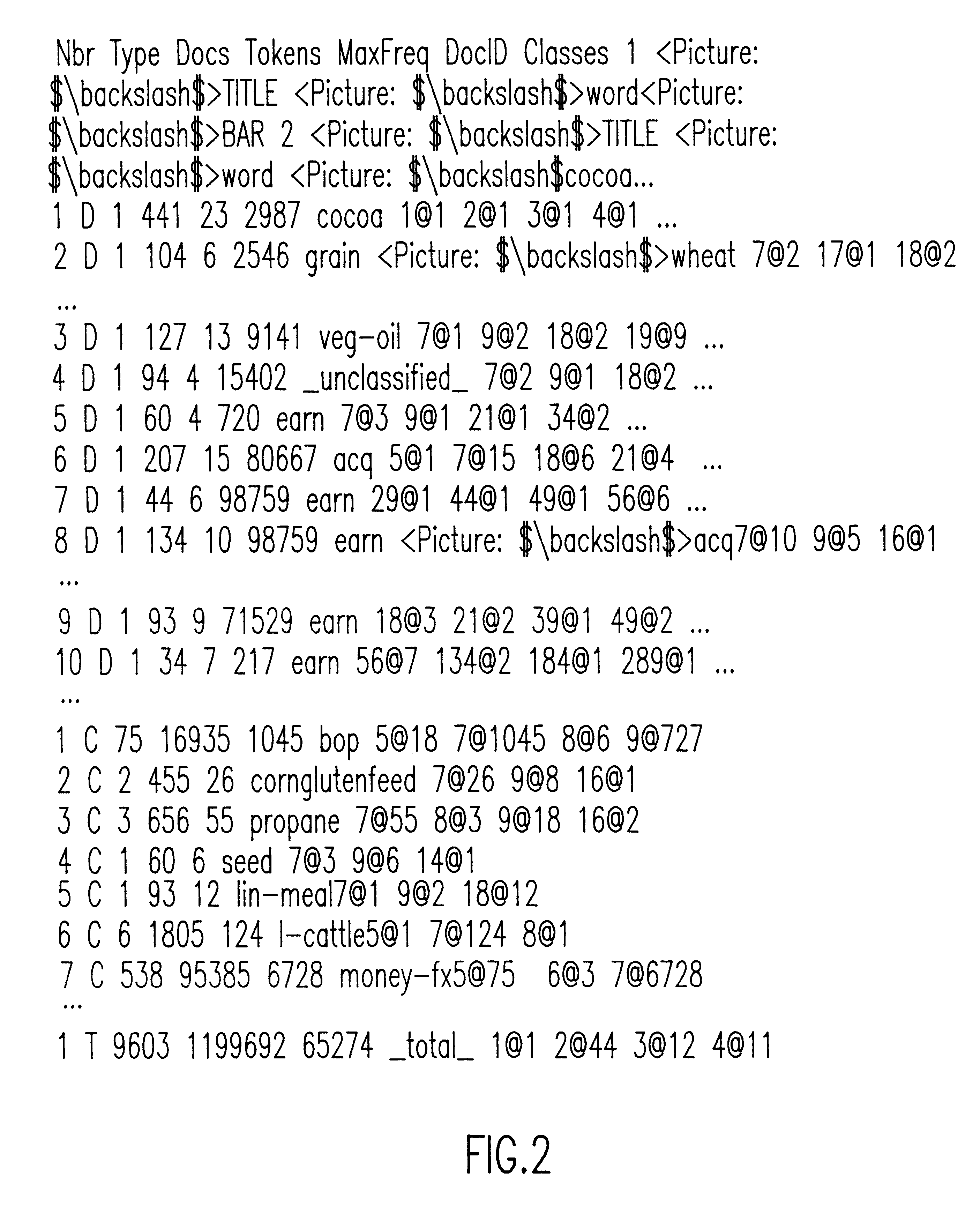Text categorization toolkit
a text categorization and toolkit technology, applied in the field of computer text categorization, can solve the problems of only a valuable resource, information is typically lost, and the effect of only a relatively small database is not strong enough
- Summary
- Abstract
- Description
- Claims
- Application Information
AI Technical Summary
Benefits of technology
Problems solved by technology
Method used
Image
Examples
Embodiment Construction
Text classification typically involves three major tasks including data preparation, training and testing. Data preparation involves obtaining a corpus of pre-classified data and training involves training a classifier on a corpus of pre-classified data. Testing includes testing the classifier with some subset of the pre-classified data set aside for this purpose.
The process of generating training vectors of the present invention can be divided into three steps:
1. Feature definition: Typically this involves breaking the text up into tokens. Tokens can then be reduced to their stems or combined to multi-word terms.
2. Feature count: Typically this involves counting the frequencies of tokens in the input texts. Tokens can be counted by their absolute frequency, and several relative frequencies (relativized to the document length, the most frequent token, square root, etc.).
3. Feature selection: This step includes weighting features (e.g., depending on the part of the input text they oc...
PUM
 Login to View More
Login to View More Abstract
Description
Claims
Application Information
 Login to View More
Login to View More - R&D
- Intellectual Property
- Life Sciences
- Materials
- Tech Scout
- Unparalleled Data Quality
- Higher Quality Content
- 60% Fewer Hallucinations
Browse by: Latest US Patents, China's latest patents, Technical Efficacy Thesaurus, Application Domain, Technology Topic, Popular Technical Reports.
© 2025 PatSnap. All rights reserved.Legal|Privacy policy|Modern Slavery Act Transparency Statement|Sitemap|About US| Contact US: help@patsnap.com



